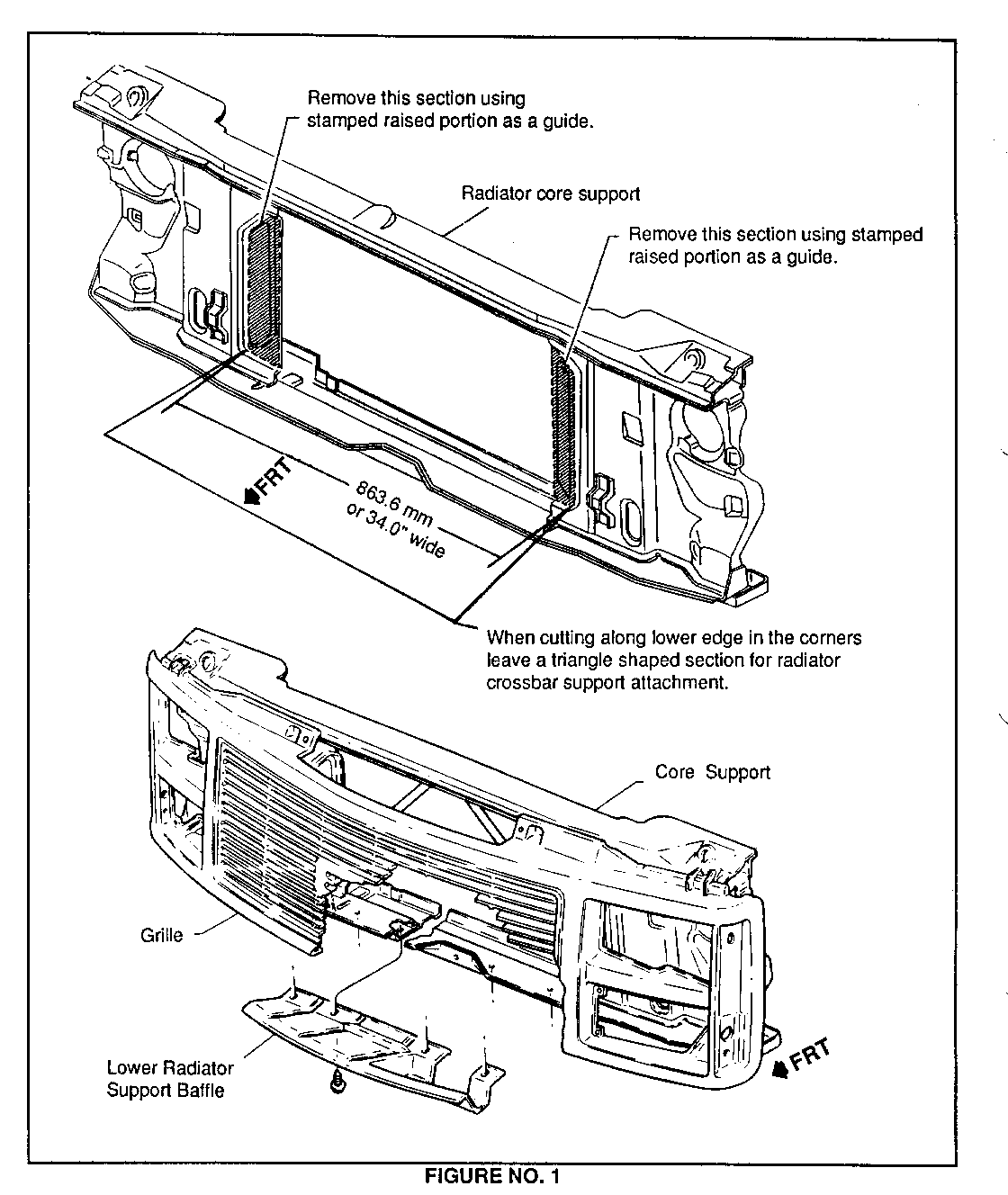ENGINE OVERHEAT WHILE TOWING OR HEAVY USAGE

SUBJECT: ENGINE OVERHEAT (CHANGE RADIATOR SUPPORT OPENING)
VEHICLES AFFECTED: 1988 C/K 2500-3500 WITH 7.4L AND 6.2L (VIN CODE N,C,J) ENGINES
Some 1988 C/K trucks equipped with 7.4L or 6.2L engines may experience an engine overheat, (121-126 degrees celcius/250-260 degrees fahrenheit) while towing a trailer or under heavy usage, yet during normal operation, without a heavy load or trailer, the engine operates at a normal temperture, (99-113 degrees celcius/210-235 degrees fahrenheit).
If the condition cannot be repaired using procedures in the Service Manual, the radiator core support opening should be inspected for the proper opening width. The truck should also be inspected for the presence of the lower radiator support baffle (see Figure 1). If baffle is missing, it must be installed. The baffle can be seen by looking down between the grille and the radiator.
Inspection Procedure
1. Remove the upper half of the fan shroud.
2. Pull radiator back away from core support to inspect the opening, being careful not to damage radiator. It is not necessary ,to remove the hoses or cooler lines.
3. Using a tape measure, measure the width of the opening. The opening must be 863.6 rm or 34.0" wide. If the opening is the correct width, reinstall upper half of shroud. If the opening is not the correct width, use the following procedure.
Repair Procedure
1. Remove radiator using procedures in Section 6B Engine Cooling of the 1988 C/K Service Manual (G.M.C X-8731 or X-8731B or Chevrolet ST-375-88).
2. Mark the sections of the core support to be removed (see Figure 1) and remove the sections, using a suitable tool (panel cutter, die grinder with cut-off wheel, panel knibler, etc.). The core support openings are stamped and can be used as a guide. When cutting the lower corners, it is important to leave a small triangle shaped section for proper radiator support rod attachment. The edge of the new opening must be painted to prevent corrosion. Use P/N 992651 or equivalent.
3. Reinstall the radiator and refill the cooling system and road test the vehicle.

General Motors bulletins are intended for use by professional technicians, not a "do-it-yourselfer". They are written to inform those technicians of conditions that may occur on some vehicles, or to provide information that could assist in the proper service of a vehicle. Properly trained technicians have the equipment, tools, safety instructions and know-how to do a job properly and safely. If a condition is described, do not assume that the bulletin applies to your vehicle, or that your vehicle will have that condition. See a General Motors dealer servicing your brand of General Motors vehicle for information on whether your vehicle may benefit from the information.
